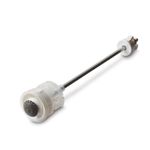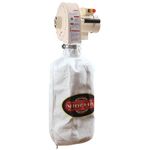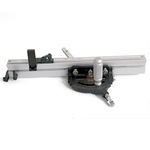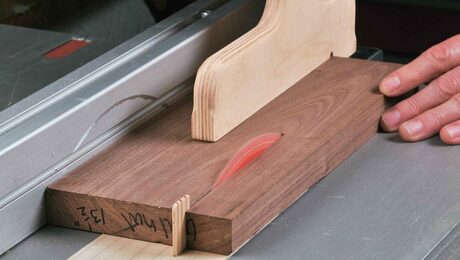Tool Test: Midi Lathes
Andrew Finnigan put six midi lathes through a series of performance tests, designed to evaluate them thoroughly both for spindle turning and face work.
Synopsis: Spanning the gap between mini lathes and full-size machines, midi lathes are often the perfect professional machine for woodworkers. Andrew Finnigan put six midi lathes through a series of performance tests, designed to evaluate them thoroughly both for spindle turning and face work. Lathes were separated into two categories: under $1300 and over $2000.
Midi lathes span the gap between mini lathes and full-size machines. A midi is generally more capable and easier to use than a mini, while remaining more affordable, smaller, and more portable than a full-size lathe. Often the introductory machine for those just beginning turning, the midi can also be the perfect professional machine for any number of makers: those looking to turn relatively small items or furniture components, or those with small workspaces.
As a professional turner and furniture maker, my focus is primarily spindle and architectural based work, and most of my days are spent entirely at the lathe. An inherently simple piece of machinery, it holds and spins a piece of wood around a central axis. It has a headstock, bed, tailstock, and centers to hold the spinning work. The banjo and tool rest are moved around and locked to the bed to support the turning tools and allow for the work of turning. How well a lathe does its job depends upon how substantially and how well the stress-bearing components are made and how positively and easily they’re secured and adjusted. Power and power distribution have important roles: An appropriately powered electric motor and properly sized belts and pulleys are critical. Lastly, a reasonable degree of accuracy in machining is necessary. Centers should align and there should not be excessive play in any part of the system. As I examined the lathes in this review, I was considering all of these factors.
7 Performance Tests
To evaluate the various testing criteria, Finnigan chose seven pieces to turn per machine. Each piece tests the lathe in a different way or in a different capacity. All of the turning tests were performed on straight-grained hard maple with the exception of the very rough bowl blanks, which were seasoned ash. Spindle blanks measured appropriately 2 in. square by 12 in. long. Face work blanks were approximately 8 in. dia. by 2 in. thick. The rough square ash bowl blanks were approximately 7 in. square by 3 in. thick. Finnigan performed all the testing in the same order for each machine.
Spindle turning




Face work



The testing criteria
For this review, we divided the field of midis in two by price: those under $1,300 and those over $2,000. I tested 10 lathes overall and assessed them by looking at issues in the following categories.
Ergonomics
How much effort was put into the design with regard to extended use and overall functionality.
Actual working dimensions
A lathe’s listed swing and length dimensions are rarely accurate. I’m interested in the actual swing over the bed, over the banjo, and what’s safely possible between centers.
Ease of operation
Overall ease of use of the controls and ease of adjustment of the headstock (if applicable), tailstock, banjo, and tool rest.
Quality of stock hardware
Does the machine come with a high-quality. well-designed tool rest, live center, and other hardware? Would the machine immediately benefit from aftermarket upgrades?
Stability
I checked the ability for cams and locking mechanisms to remain solid and stationary during use and to take abuse without failing or creeping. I also examined quality of construction as it pertains to the machine’s ability to tolerate heavy cuts and unbalanced work without excessive vibration.
Power
More important than horsepower, what is the power delivery like? Can the belt and pulley handle heavy cuts without slipping? This would be of particular interest for bowl turners.
Expandability
While the midi is a perfect fit for many woodworkers, it’s also a first lathe for many woodturners due to its general affordability. Speaking from experience, some turners may want to expand the capacities of their machines after a time. Are bed extensions or other aftermarket add-ons compatible with the lathe or offered by the manufacturer?

Andrew Finnigan designs and builds furniture in Kerhonkson, N.Y.
Photos: Anissa Kapsales
To view the entire article, please click the View PDF button below.
Fine Woodworking Recommended Products

CrushGrind Pepper Mill Mechanism

Shop Fox W1826

JessEm Mite-R Excel II Miter Gauge

























Log in or create an account to post a comment.
Sign up Log in